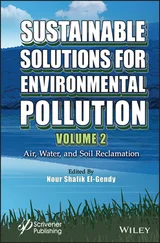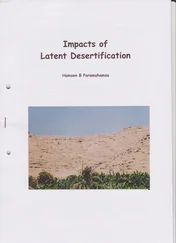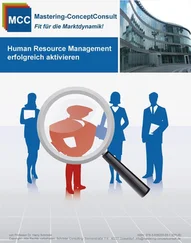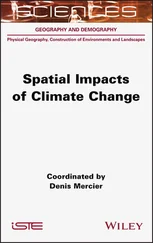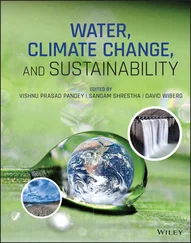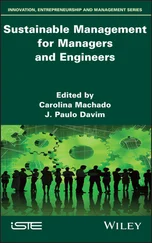Climate Impacts on Sustainable Natural Resource Management
Здесь есть возможность читать онлайн «Climate Impacts on Sustainable Natural Resource Management» — ознакомительный отрывок электронной книги совершенно бесплатно, а после прочтения отрывка купить полную версию. В некоторых случаях можно слушать аудио, скачать через торрент в формате fb2 и присутствует краткое содержание. Жанр: unrecognised, на английском языке. Описание произведения, (предисловие) а так же отзывы посетителей доступны на портале библиотеки ЛибКат.
- Название:Climate Impacts on Sustainable Natural Resource Management
- Автор:
- Жанр:
- Год:неизвестен
- ISBN:нет данных
- Рейтинг книги:4 / 5. Голосов: 1
-
Избранное:Добавить в избранное
- Отзывы:
-
Ваша оценка:
- 80
- 1
- 2
- 3
- 4
- 5
Climate Impacts on Sustainable Natural Resource Management: краткое содержание, описание и аннотация
Предлагаем к чтению аннотацию, описание, краткое содержание или предисловие (зависит от того, что написал сам автор книги «Climate Impacts on Sustainable Natural Resource Management»). Если вы не нашли необходимую информацию о книге — напишите в комментариях, мы постараемся отыскать её.
Climate Impacts on Sustainable Natural Resource Management — читать онлайн ознакомительный отрывок
Ниже представлен текст книги, разбитый по страницам. Система сохранения места последней прочитанной страницы, позволяет с удобством читать онлайн бесплатно книгу «Climate Impacts on Sustainable Natural Resource Management», без необходимости каждый раз заново искать на чём Вы остановились. Поставьте закладку, и сможете в любой момент перейти на страницу, на которой закончили чтение.
Интервал:
Закладка:
The IPCC announced that the increase in the recorded Earth's temperature during the last 50 years is the result of various human activities. Climate change has become an important driving force in regulating mechanisms of the physical and biological world. It is now well established that climate change influences a vast number of sectors and resources, either directly or indirectly. The governments of the world have responded to the threats associated with climate change to formulate actions for mitigation. For a better understanding, long‐term observation is desirable to continuously monitor precipitation, temperature, daily radiation, etc. along with the monitoring of the spatial extent and health of natural resources to conclusively establish site‐specific impact assessment. Throughout the world, several attempts have been made to minimize the impact of climate change or to initiate necessary steps to retard the speed of climate change. Natural resources not only contribute to the overall growth of the economy of a nation but also reduces poverty when adequate management and sustainability are ensured. Natural resource management has emerged as one of the most inclusive growth sectors for supporting the economy of Asian countries. Besides, the forward and backward linkages of natural resources to climate change require a comprehensive understanding of a sustainable world. Global weather and climate studies are increasingly being considered as a vital source of information to understand the Earth's environment, especially human‐induced climate studies and factors affecting natural resources.
This book covers significant and updated contributions in the field of sustainable natural resources management linked to climate change. The updated knowledge from countries like India, Indonesia, Japan, Malaysia, Sri Lanka, and the USA is presented in this book through selected case studies for major thematic areas that have basic preliminary concepts and elaborates the scientific understanding of the relationship between natural resources and climatic drivers, influence of climate change on agriculture, forest, water resources, etc. The book has been separated into six major themes, each having subject‐specific chapters to develop the concept and to present the findings in a lucid way that is useful for a wide range of readers. While the range of applications and innovative techniques is constantly increasing, this book provides a summary of key case studies to provide the most updated information. Chapters incorporate multi‐source data and information that offer critical understanding to explain the causes and effects of environmental changes linked to natural resource management. This book will be of interest to researchers and practitioners in the field of environmental sciences, remote sensing, geographical information, meteorology, sociology and policy studies, etc. related to natural resource management and climate change. Also, scientists and graduate and post‐graduate level students of various disciplines will find valuable information in this book. We believe that the book would be read by people with a common interest in sustainable development and other diverse backgrounds within earth observation.
The scientific quality of the book was ensured by a rigorous review process where leading researchers from Australia, Canada, India, Indonesia, Japan, Malaysia, Sri Lanka, and the USA participated to provide constructive comments to improve the chapters. Due to the confidentiality of the review process, we are unable to provide their names; however, we are deeply indebted and thankful for their voluntary support. On behalf of the team of authors, we express our gratitude to the entire crew of Wiley for all kind of assistance to make this a successful endeavor.
Pavan Kumar
Ram Kumar Singh
Manoj Kumar
Meenu Rani
Pardeep Sharma
1 Impact of Local REDD+ Intervention on Greenhouse Gas Emissions in East Kalimantan Province, Indonesia
Kiswanto1, Martiwi Diah Setiawati2,3, and Satoshi Tsuyuki4
1 Faculty of Forestry, Mulawarman University, Indonesia, Campus of Gunung Kelua, Penajam Street, Samarinda, East Kalimantan 75116 Indonesia
2 Institute for Future Initiatives, The University of Tokyo, 7-3-1 Hongo, Bunkyo-ku, Tokyo 113-8654 Japan
3 Research Center for Oceanography, Indonesian Institute of Sciences, Jl. PasirPutih I, East Ancol, Jakarta 14430 Indonesia
4 Graduate School of Agricultural and Life Sciences, TheUniversity of Tokyo, 1-1-1 Yayoi, Bunkyo-ku, Tokyo 113-8657 Japan
1.1 Introduction
1.1.1 Tropical Deforestation
Initially, carbon was stored in the forests (Houghton 2012), but once the forests were logged and cleared, carbon (i.e. both above and below ground) was released into the atmosphere (Baccini et al. 2012) mostly in the for of carbon dioxide (CO 2). However, the decomposition or burning of the forest may also release small amounts of methane (CH 4) and carbon monoxide (CO) (Achard et al. 2014; Rosa et al. 2016; Bebber and Butt 2017; Brinck et al. 2017; Pearson et al. 2017). Thus deforestation received high attention from the scientific community (Rosa et al. 2016; Sierra et al. 2012; Zarin 2012) on carbon emissions (Numata et al. 2011; Houghton 2012; Le Quéré et al. 2015), especially in the tropics, where deforestation is responsible for 17%–25% of carbon dioxide (CO 2) emissions into the atmosphere (Le Quéré et al. 2015). So tropical deforestation is one of the leading causes of global carbon emissions and biodiversity loss (Brun et al. 2015). Therefore, understanding its drivers is crucial for improving policies and measuring current forest trends toward a more climate‐ and biodiversity‐friendly outcome (Hosonuma et al. 2012). Also, the Forest Resources Assessment (FRA) of the Food and Agriculture Organization of the United Nations (FAO) provides a complete measurement of above‐ground carbon stocks for tropical forests (FAO 2006, 2010, 2015).
1.1.2 REDD+
Reducing emissions from deforestation and forest degradation (REDD+) now constitutes the international convention for mitigating climate change, particularly in forest‐rich developing countries (Gullison et al. 2007; Arima et al. 2014). The “+” after REDD comes from more recent dialogs that have broadened the mechanism's scope to recognize carbon benefits of forest conservation, sustainable forest management (SFM), and the sequestration potential of afforestation and reforestation (Venter and Koh 2012). The REDD+ mechanism is the most prominent of recent attempts to mitigate climate change (Agrawal et al. 2011). Furthermore, leakage policies of REDD+ should be monitored, measured, and mitigated to guarantee their effectiveness (Atmadja and Verchot 2012).
Reducing emissions from deforestation by 2020 could bring the international community nearer to the goal of less than 2 degree increase in global average temperature change (Zarin et al. 2016). Furthermore, more than 180 governments, private companies, indigenous peoples, and non‐governmental organizations have signed the New York Declaration on Forests (NYDF) in September 2014 (UN Climate Summit 2014). Within the REDD+ policy framework, developing countries might develop national systems for carbon accounting (Angelsen 2009; Logan‐Hines et al. 2012).
Developing countries are encouraged to develop national strategies and action plans for REDD+ by identifying the drivers of deforestation (Hosonuma et al. 2012). In the past three decades, satellite‐based observations of forest cover change provide an alternative to estimate deforestation rates regularly across space and time (Zhuravleva et al. 2013; Kuenzer et al. 2014; Kamaruddin et al. 2015). At continental to global scales, forest cover maps and change in cover are increasingly being generated from various satellite data sources (Potapov et al. 2012; Kim et al. 2014; Margono et al. 2014). In the latest development, Landsat images have been used to determine tropical deforestation rates (Broich et al. 2011; FAO 2011; Lehmann et al. 2014; Estavillo et al. 2013; Zhuravleva et al. 2013; Potapov et al. 2012). Also, previous studies of forest cover change datasets have been integrated with satellite‐based forest biomass information to quantify changes in forest carbon stocks (Baccini et al. 2012; Achard et al. 2014; Tyukavina et al. 2015). However, they might show diverse results due to their different methods for mapping and analyzing.
Читать дальшеИнтервал:
Закладка:
Похожие книги на «Climate Impacts on Sustainable Natural Resource Management»
Представляем Вашему вниманию похожие книги на «Climate Impacts on Sustainable Natural Resource Management» списком для выбора. Мы отобрали схожую по названию и смыслу литературу в надежде предоставить читателям больше вариантов отыскать новые, интересные, ещё непрочитанные произведения.
Обсуждение, отзывы о книге «Climate Impacts on Sustainable Natural Resource Management» и просто собственные мнения читателей. Оставьте ваши комментарии, напишите, что Вы думаете о произведении, его смысле или главных героях. Укажите что конкретно понравилось, а что нет, и почему Вы так считаете.


